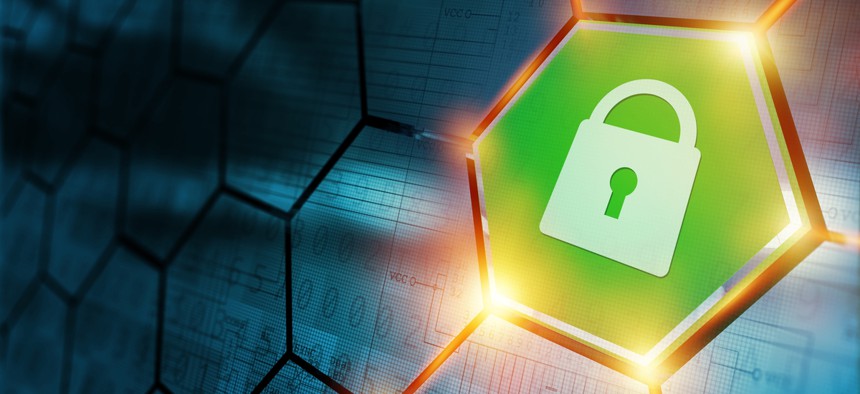Will the U.S. Ever Switch From Cyber Defense to Offense?

welcomia/Shutterstock.com
After another cyberattack on a U.S. city, it may be time to figure out a less passive response.
One of my favorite lyrical quotes from music is “It's not the end of the world, but I can see it from here,” by the Welsh rock band Lostprophets, from their hit song of the same name. It’s a deep statement on many levels, simultaneously assuring listeners that the end of the world is not directly upon us, but that we need to be careful because we are moving in that direction.
It felt a lot like that over these past few weeks, witnessing major cyberattacks against both critical infrastructure and American cities. None of these incursions into our infrastructure by themselves could herald the end of the world, but if we continue to do nothing against the perpetrators, how much worse are things going to get?
First off, one of the highest profile cyberattacks in recent memory crippled the city of Atlanta. This was, at its heart, a financial crime, but one that may have spread beyond its intended scope. Ransomware was delivered to selected client systems inside the Atlanta municipal network, encrypting computers and demanding a ransom for the keys to unlock them. It was allegedly sent by a known hacker group that has pulled off similar ransom schemes against municipalities worldwide.
Only in Atlanta, the problem may have grown too large, even for the hackers, who would probably prefer a quiet payment of funds before moving on to their next targets. In Atlanta, poor cybersecurity and limited ability to monitor lateral movement within their network lead to most of the city becoming infected by the malware. Instead of forcing a quiet ransom payment, hackers plunged Atlanta back into 1950s technology levels, with many major services knocked offline. Entire divisions, like the district courts, were unable to process warrants or try cases. Citizen services were severely curtailed, or even unavailable for many days as the city struggled to purge infected systems.
And while that was going on, a more insidious but potentially more devastating threat was creeping through our electrical grid and utilities. At least a dozen power plants suddenly became victims of a multi-pronged, coordinated attack targeting utility companies. The attackers “conducted network reconnaissance, moved laterally, and collected information pertaining to Industrial Control Systems” according to a report from the United States Computer Emergency Readiness Team.
In response to those attacks, US-CERT issued Alert TA18-074A, entitled “Russian Government Cyber Activity Targeting Energy and Other Critical Infrastructure Sectors.” The report details how the attackers gained access to internal energy sector networks, and gives advice on how to shore up defenses for future attacks.
In both cases, our national response seems to be decidedly passive, cleaning up after cyber criminals in the first case, and tightening security to make it harder for the Russians the next time they visit in the second.
Back when I was a federal reporter during the Clinton administration, cyberattacks and warfare were just starting to heat up. When I would interview military leaders, they would sometimes advocate for “going back over the hill” as they called it, basically striking back at attackers and fighting fire with fire. However, the president stayed their hand, not wanting to become engaged in an active cyberwar, especially against another superpower like Russia or China.
Subsequent presidents agreed with that posture, although President Donald Trump has flirted with the idea of going offensive, at least in tweets and casual musings. However, one of the reasons that the non-aggression policy was so easy to support was that we really didn’t have much capability to conduct cyber warfare. Today, we do.
The Defense Department is building out a Cyber Mission Force, which consists of over 6,000 personnel divided up into 133 teams spread out across all branches of service and the National Guard. Those teams were due to be fully ready by September of this year, but almost all branches of service are reporting that their teams are ready now, several months early.
There have already been calls for their deployment, though mostly in defensive roles. A joint bill from Sens. Kirsten Gillibrand. D-N.Y., and Lindsey Graham, R-S.C., could use the teams to investigate vote hacking, and to deploy them to protect the coming election, though that would still be mostly a defensive role.
Beyond just adopting a defensive posture, the question becomes, when is it OK to use the Cyber Mission Forces offensively? Military leaders have said that the CMF teams possess a mixture of defensive, offensive and support capabilities. Should they be used to actively attack our attackers?
I think, if nothing else, we need to define where that line in the sand is that would sanction a switch to offense, so we can act aggressively should it ever be crossed. Perhaps the Russian probing of our utility infrastructure doesn’t qualify because they didn’t do any actual harm, beyond gathering intelligence that would let them more easily hurt us in the future. And in the case of Atlanta, the hackers are presumably a civilian group, so sending the military after them raises more questions.
I don’t have the answers, and ultimately don’t want to risk a full-on cyberwar over nothing, especially since such a war could easily spiral into a conflict in the physical world. But can we really sit back and take these constant attacks, at this level, without responding? Especially now that we have a robust capability to strike back, the question of if we should, and when, deserves more careful consideration.
John Breeden II is an award-winning journalist and reviewer with over 20 years of experience covering technology. He is the CEO of the Tech Writers Bureau, a group that creates technological thought leadership content for organizations of all sizes. Twitter: @LabGuys
NEXT STORY: Every Day is D-Day on the Data-Breach Beaches



